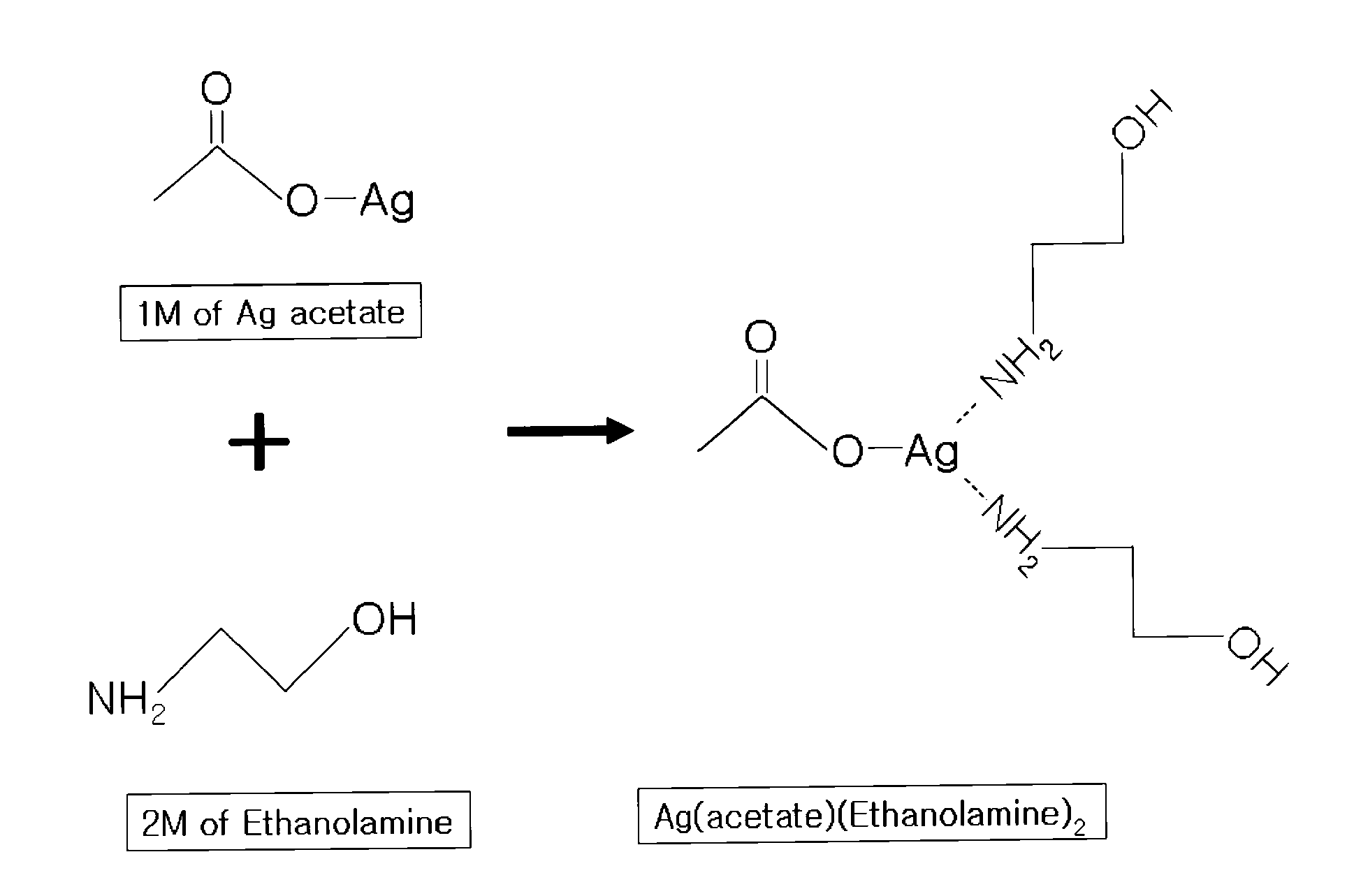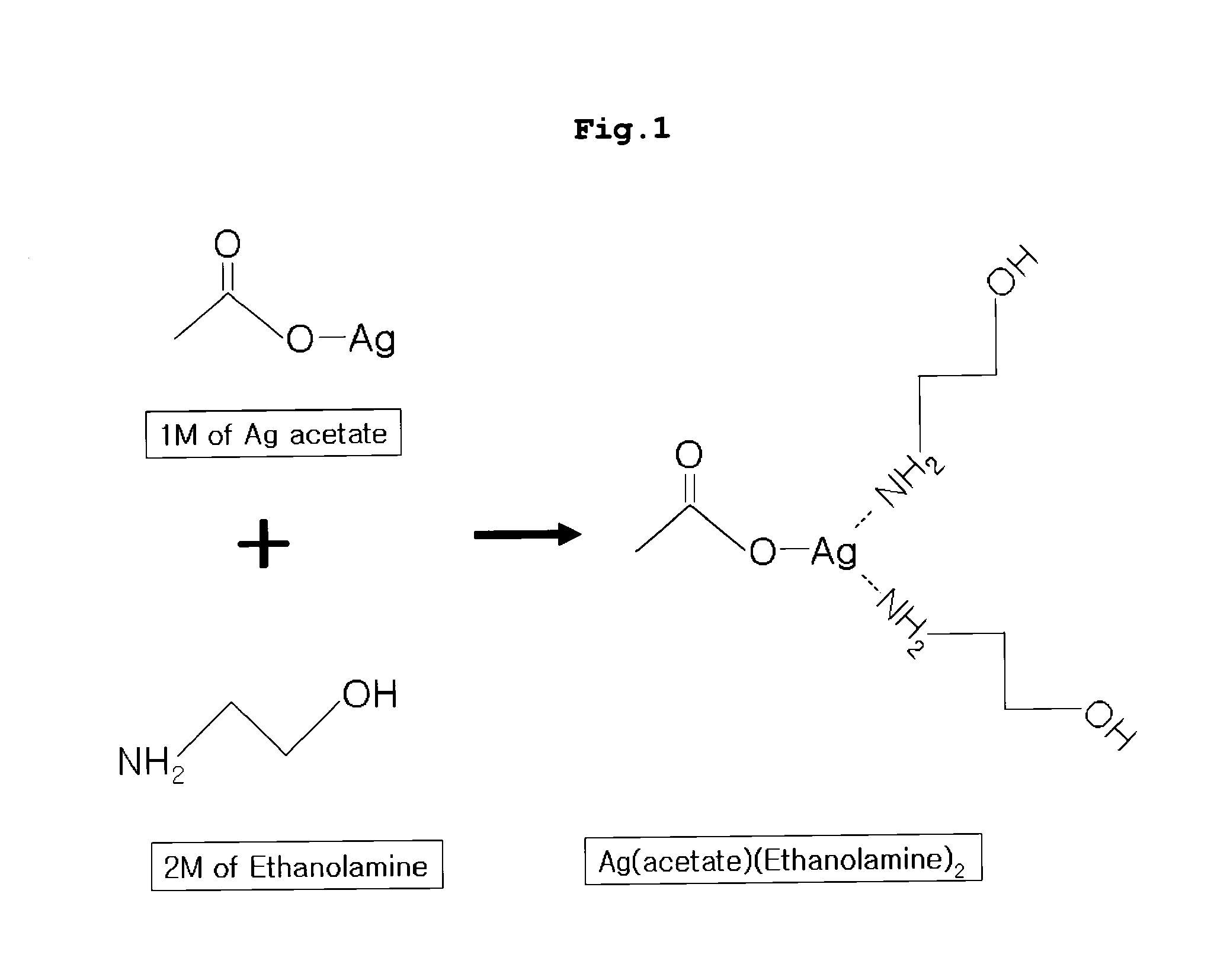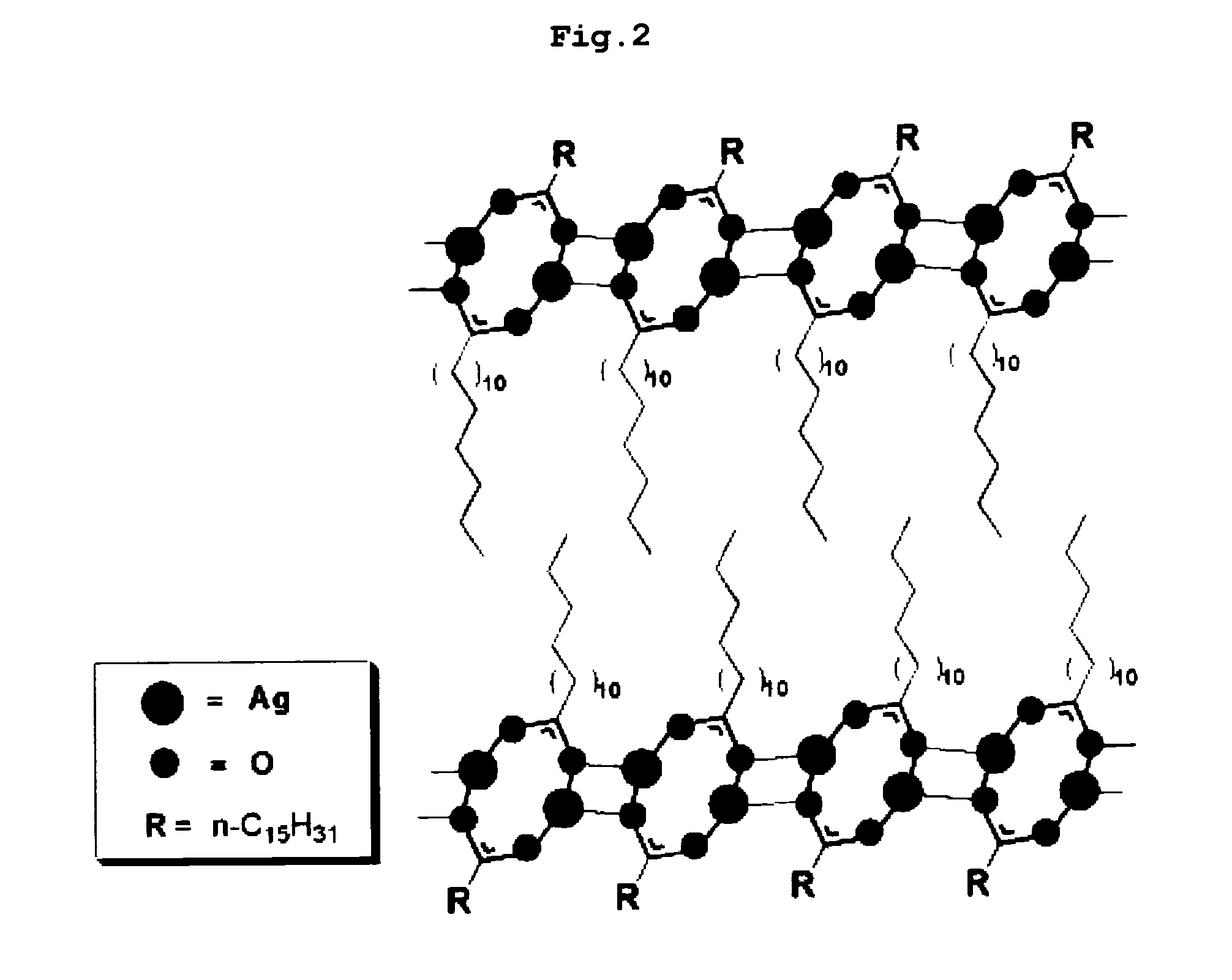Organic silver complex compound used in paste for conductive pattern forming
- Summary
- Abstract
- Description
- Claims
- Application Information
AI Technical Summary
Benefits of technology
Problems solved by technology
Method used
Image
Examples
example 1
[0080]In a round bottom flask, 1 equivalent of silver (acetate) (Ag(C2O2H3)) and 200 ml of methanol were placed, 2 equivalents of ethanolamine was added thereto with stirring, and the mixture was allowed to react. Then, the solvent was removed by distillation with a vacuum distillation system at about 30° C., and an excess of methanol was removed with diethylether, thus preparing viscous liquid Ag(acetate)(ethanolamine)2.
[0081]FIG. 3 is a graphic diagram showing the TGA data of the prepared organic silver complex compound.
[0082]The results of 1H-NMR analysis of the prepared organic silver complex compound are as follows: 4.66 (3H), 3.53-3.48 (4H), 2.76(NH), 1.75 (OH), 1.02 (4H). From the analysis results, it could be seen that Ag(acetate)(ethanolamine)2 was synthesized.
example 2
[0083]Ag(acetate)(diethanolamine)2 was prepared in the same manner as in Example 1, except that diethanolamine was used instead of ethanolamine. The TGA data of the prepared organic silver complex compound are shown in FIG. 4.
example 3
[0084]Ag(propionate)(ethanolamine)2 was prepared in the same manner as in Example 1, except that silver (propionate) (Ag(C3O2H5)) was used instead of silver (acetate) (Ag(C2O2H3)).
PUM
| Property | Measurement | Unit |
|---|---|---|
| Temperature | aaaaa | aaaaa |
| Temperature | aaaaa | aaaaa |
| Percent by mass | aaaaa | aaaaa |
Abstract
Description
Claims
Application Information
 Login to View More
Login to View More - R&D
- Intellectual Property
- Life Sciences
- Materials
- Tech Scout
- Unparalleled Data Quality
- Higher Quality Content
- 60% Fewer Hallucinations
Browse by: Latest US Patents, China's latest patents, Technical Efficacy Thesaurus, Application Domain, Technology Topic, Popular Technical Reports.
© 2025 PatSnap. All rights reserved.Legal|Privacy policy|Modern Slavery Act Transparency Statement|Sitemap|About US| Contact US: help@patsnap.com



